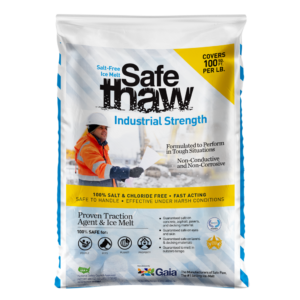Mastering The Art Of Walking On Ice: Essential Safety Tips

Walking on ice is a skill crucial for safety during the winter months. This comprehensive guide not only explores how to walk on ice safely but also highlights the limitations of traditional traction methods like sand and kitty litter, advocating for the innovative solution ‘Walk On Ice’.
The Downsides Of Using Sand And Kitty Litter On Icy Surfaces
While sand and kitty litter have been traditional go-tos for ice traction, they come with significant downsides:
- Limited Effectiveness: Sand provides minimal traction and can be easily displaced, reducing its effectiveness. Kitty litter, though offering more grip initially, tends to clump and become slippery when wet.
- Clean-Up and Maintenance: These materials get tracked into homes and vehicles, creating a need for constant clean-up. They also need regular reapplication, which can be time-consuming and inconvenient.
- Environmental Impact: Kitty litter, in particular, is not eco-friendly. When washed into the soil, it can harm local plant and animal life.
Introducing ‘walk On Ice’: A Superior Traction Agent
‘Walk On Ice’ stands out as an innovative traction agent designed for utmost safety on icy surfaces. It is a 100% natural product, ensuring safety for pets, people, and the environment.
Why Opt For ‘walk On Ice’?
- Immediate Traction: It offers instant grip, a stark contrast to the delayed and often ineffective traction provided by sand and kitty litter.
- Eco-Friendly: Being entirely natural, it is environmentally responsible.
- Convenience and Efficiency: The product works effectively in temperatures as low as -35 degrees Celsius and comes in a handy canister for ease of use.
- Safety for Pets and Property: Unlike some chemical agents, ‘Walk On Ice’ is safe for pets and does not damage property.
Safe Walking Techniques On Ice
- Take Measured Steps: Walk slowly and deliberately, taking small steps to maintain balance.
- Maintain Center of Gravity: Keep your body weight directly over your feet as much as possible.
- Wear Proper Footwear: Shoes with good traction can significantly reduce the risk of slipping.
- Use ‘Walk On Ice’ for Enhanced Safety: Before stepping onto an icy surface, sprinkle ‘Walk On Ice’ to create a safe, non-slip path.
Get ready for winter with Walk On Ice instant traction on snow and ice
Incorporating ‘walk On Ice’ Into Winter Routines
Keeping a canister of ‘Walk On Ice’ at key locations ensures you’re always prepared for icy conditions. Whether at home, in the car, or at the office, it’s a convenient solution for immediate traction.
Understanding The Technology Behind ‘walk On Ice’
The unique composition of ‘Walk On Ice’ involves absorbent materials that latch onto the ice, creating a stable, non-slip surface. This immediate action on how to walk on ice safely is particularly useful in preventing accidents that can occur during the time it takes for traditional methods to become effective.
Final Thoughts
In conclusion, how to walk on ice safely involves more than cautious steps and appropriate footwear. It requires the right tools. ‘Walk On Ice‘ offers a groundbreaking, convenient, and eco-friendly solution to the age-old problem of navigating icy surfaces. Say goodbye to ineffective and messy methods like sand and kitty litter, and welcome a safer winter with ‘Walk On Ice’.
Other Ice Melt Products
Safe Paw
The Original and #1 Selling Pet and Child Safe Ice Melt for over 20 years. Guaranteed environmentally safe – will not harm waterways and sensitive wetlands. All products are made in the USA.

Safe Thaw
Imagine an ice melt you can put down and never worry about. It won’t harm pets, kids, and your property. That’s Safe Thaw. Unlike anything else on the market, Safe Thaw can change how winter affects our planet.



